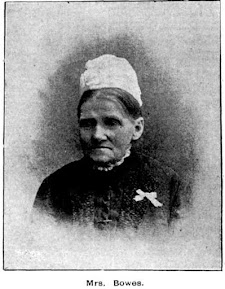William Bland's famous daguerreotype and the Deemer headstone
Welcome to
"TweenXmas", a name given by me to that time between Christmas and
the New Year!
For this blog I have some
additional information about a rather remarkable man I dedicated a blog to on 28th March this year.
Today’s blog will be
referenced as
WILLIAM BLAND with
enhancements!
Take a look at the original blog by clicking on his name in the labels area at the end of this blog.
A few months ago, the State
Library of NSW opened a new ground floor area devoted to its vast collection of
photographs.
Its inaugural exhibition
"Shot" displays 400 photographs taken by 200 photographers over 3
centuries and is displayed as a series of galleries. It displays people going
about their general business at the time, in sadness or at play and shows scenes
from past pivotal events in our history. The images are displayed on various
mediums from daguerreotypes and glass negatives through many changing
technologies to what we are familiar with today.
Pride of place and the first
display is Australia's oldest surviving photograph, that of Dr William Bland,
made in 1844 or early 1845 by Australia's first commercial photographer, George
Barron Goodman. It is extremely small at 6.3 x 5cm. It is sealed behind glass
in order to protect its particles that lie directly on the surface of the
silver plate and form its image. It is in perfect condition and came to the
library as part of a collection from a family archive.
Generally, Goodman's
daguerreotypes are much larger but the polished silver plates were very
expensive and once stock was exhausted it was hard to get more shipped from the
other side of the world. Richard Beard, who sold Goodman the rights to use the
process in Australia supplied him with the smallest sized plates; hence almost
all of Australia's earliest photos were very small.
The image is exquisite in
detail with every line and wrinkle upon Bland's face deeply sketched. It's
almost imaginable to expect him to get up and walk away!
The other piece of
information relates to the gravesite of William in the Cemetery.
As I was meandering around
the local Parramatta Library in order to beat the heat one afternoon, I was
drawn to a book in the local history area by Robert Lehane about William Bland.
Simply flicking through its
contents gave me more in-depth information than I have previously had to hand.
In the plot next to William
Bland lies members of the Deemer family. One is Montague William Bland Deemer
who died aged three years in July 1868, a month before William's passing.
Hmmm...
It seems that William Deemer
was born on 22nd December 1833 in Lambeth London and by 1851 was living in the
small village of Sarratt, Northeast of Watford England and residing at the
"Lion". In 1855 William sailed to Australia having his passage paid
for by John Walker and is listed as a “Groom and Coachman to Gentlemen”, arriving in Hobart Tasmania in January
1856. William became a groomsman for William Bland and when he married Adelaide
Charlotte Smith in May 1861, she joined the household. William Deemer had left Bland’s employ but
returned before his passing.
As a sign of respect for
their employers, their first born, a daughter, was named Elizabeth Bland Deemer
who died a year after her birth in 1864 and was buried in Camperdown Cemetery.
(Interestingly the same year as the murder of Henry Smeaton by Native American Indians
in California, America, Eliza's son from a previous marriage. He had studied
medicine under his step-father – another story) Their first son, was also named
in honour of their employer, Montague William Bland Deemer. As previously
stated, he died in July 1868, one month before William's death. What exactly the
children died of I cannot be sure but there were any number of dreadful life-threatening diseases plaguing the colony such as typhoid, diphtheria and scarlet
fever. We do know that during the 1860's there were various waves of measles
that took the lives of many children.
The Deemers went on to have
several more children, but half did not make it through to adulthood. Adelaide
remained as a servant to Eliza after William Bland's death, and it seems that
her husband altered his career path gaining a publican's license at the Callen
Park Hotel in Balmain.
When Eliza Bland died in
1872, she left a chest of drawers and contents in her will to Adelaide as a
sign of high esteem. William Deemer died in 1895, followed by Adelaide in 1904.
The headstone was for many
years in its upright state but sometime ago it fell, and the inscriptions are
becoming damaged with age and exposure to the weather conditions. When I
visited recently the plot was very overgrown with cut grass having become embedded
obscuring the inscriptions. A bit of a cleanup revealed the inscriptions on the
headstone once more, albeit much worn.
The life of William Bland is
engrossing and leads to many differing threads. I think there may be a further
blog (or two) in the future.
For today’s blog I have
referenced Ancestry.com, Wikipedia, Australian Dictionary of Biography, SHOT – publication
to accompany the State Library of NSW’s exhibition and “Duelling Surgeon,
Colonial Patriot; the Remarkable Life of William Bland” by Robert Lehane.
If you have any comments or
extra information to share, please add to the comments below or failing that go
to the Group Facebook page found under
rookwoodcemeterydiscoveries
or send me a personal
message via
lorainepunch@gmail.com
Until later.....










Comments
Post a Comment